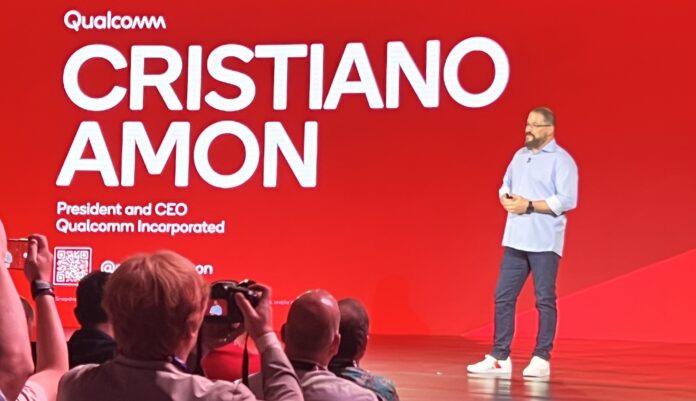The great decoupling continues—Qualcomm sees the construct of applications evolving as AI instantiates intent beyond the constraints of apps
Editor’s note: Qualcomm provided travel, lodging and other accommodations associated with Snapdragon Summit.
MAUI—Qualcomm CEO Cristiano Amon opened Snapdragon Summit with a bit of interesting (and important) commentary not on the latest in feeds and speeds delivered by the connected computing powerhouse; rather, he discussed the long view on how agentic AI systems will decouple a device user’s intent from the limitations of applications as we know them today.
First, a quick look back at how decoupling hardware and software pre-AI has very much changed how technology is developed and consumed. It used to be, and in some cases still is, that hardware and software were designed in tandem to do some specific task with limited to no flexibility and portability—think early mainframes. Then came virtualization which allows us to use a single hardware platform to concurrently run multiple applications or operating systems. Hardware and software were decoupled, with the latter now existing independently from the former.
So what’d that do? Well, it was instrumental in the rise of cloud and infrastructure-as-a-service-style consumption of compute resources. Instead of a company running a specific software application on a purpose-built hardware platform, they could deploy software on virtual machines amorphously coming in and out of existence in the cloud. Aside from the economic sea change that cloud brought into being, this gave users the flexibility to upgrade hardware without rewriting software, and deploy applications across different environments to optimize how, when and where resources were used. It also allowed software innovation to flourish as developers could now focus on driving software-based capabilities without worrying about hardware limitations; similarly, hardware vendors could iterate their own products at a cadence not necessarily tied to the pace of software development.
In the age of AI, we have of course seen a rise in specialized hardware, particularly in silicon, but we’ve also seen the decoupling continue as software can take advantage of this specialized hardware without being bound to it. In the real world that means an edge to cloud continuum—AI workloads can run how, when and where they need to. This hybrid AI architecture and attendant orchestration, like the hardware/software decoupling that came before it, supports more flexibility, more efficiency and optimization, and more innovation.
Now we’re up to present, and back to Amon to look to the future. “Computers now can understand the language of humans. Computers can now communicate like humans communicate.” Today, he said, “We have this construct that we’re now very used to…which is an app-centric experience…But that is changing…This is not about one killer app. This is how every single app and experience is going to change.”
He gave the example of opening a banking app to check your cash balance, check your savings, etc…With gen AI, you can just ask those questions to your AI-enabled device and receive the information back. If you want to interact visually with an app to show you that information, the AI model can render the screen to suit your preferences. Then Amon expanded his thinking to multi-modal AI. You show your device a bill, it looks at the bill, then you tell your assistant to pay the bill and let you know when it’s done. The possibilities for communicating intent to agentic AI that then composes an “app” to perfectly match that intent are limitless.
“I have a conviction that’s the future,” Amon said. “I just can’t predict the timing…We’re just going to see a real revolution enabled by AI-first experiences. And I think that’s a really exciting future we have in front of us.”

